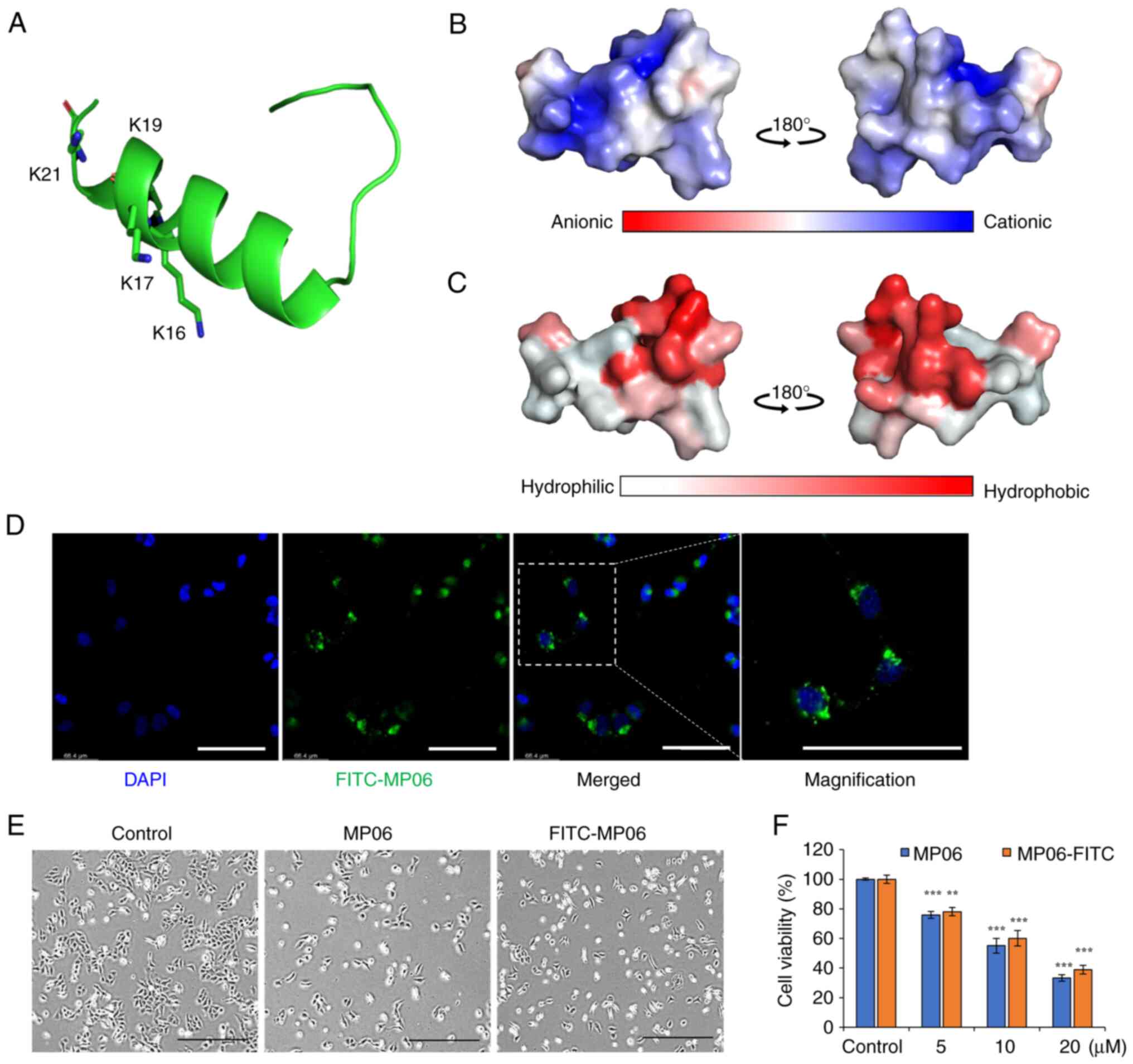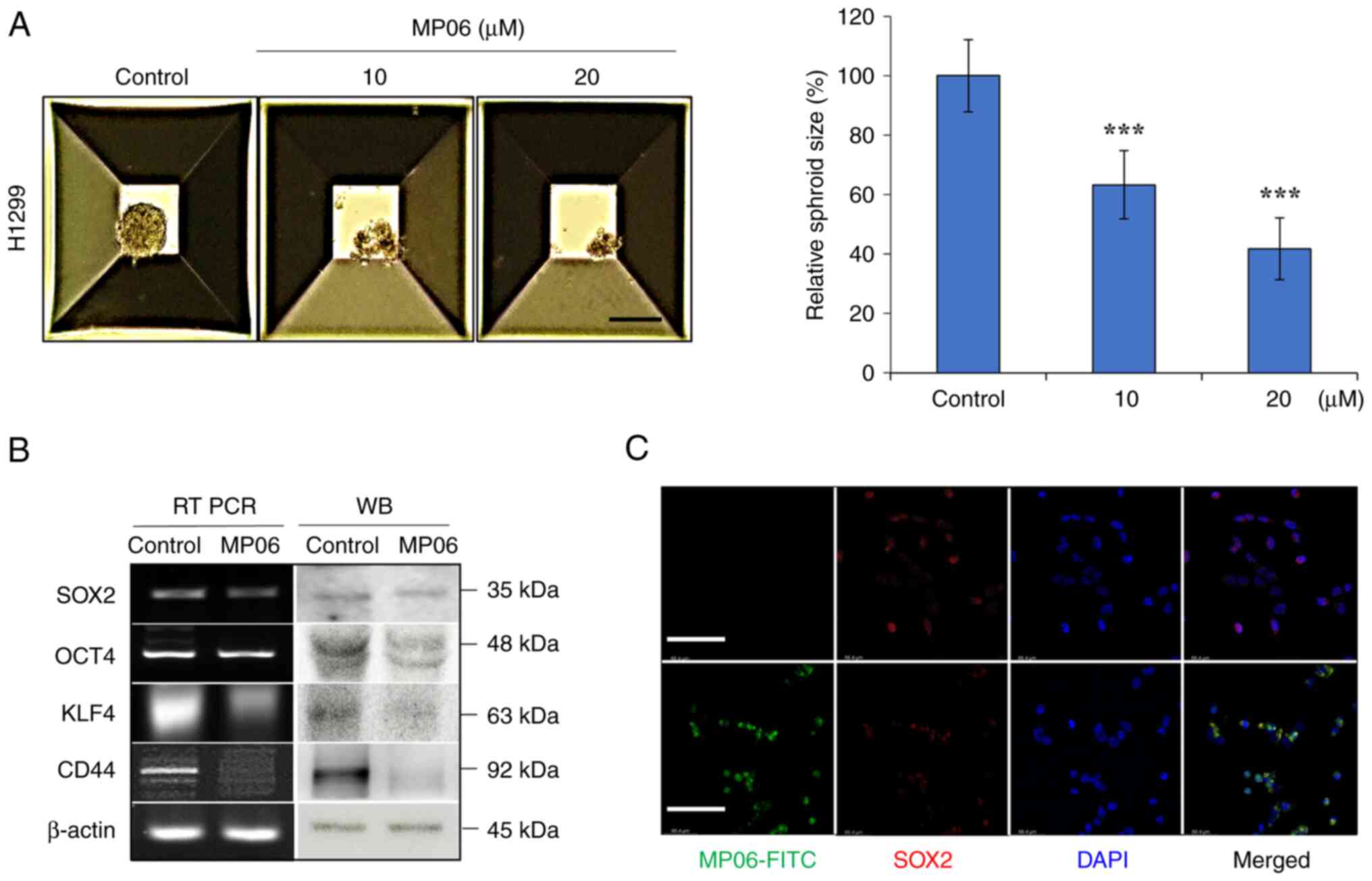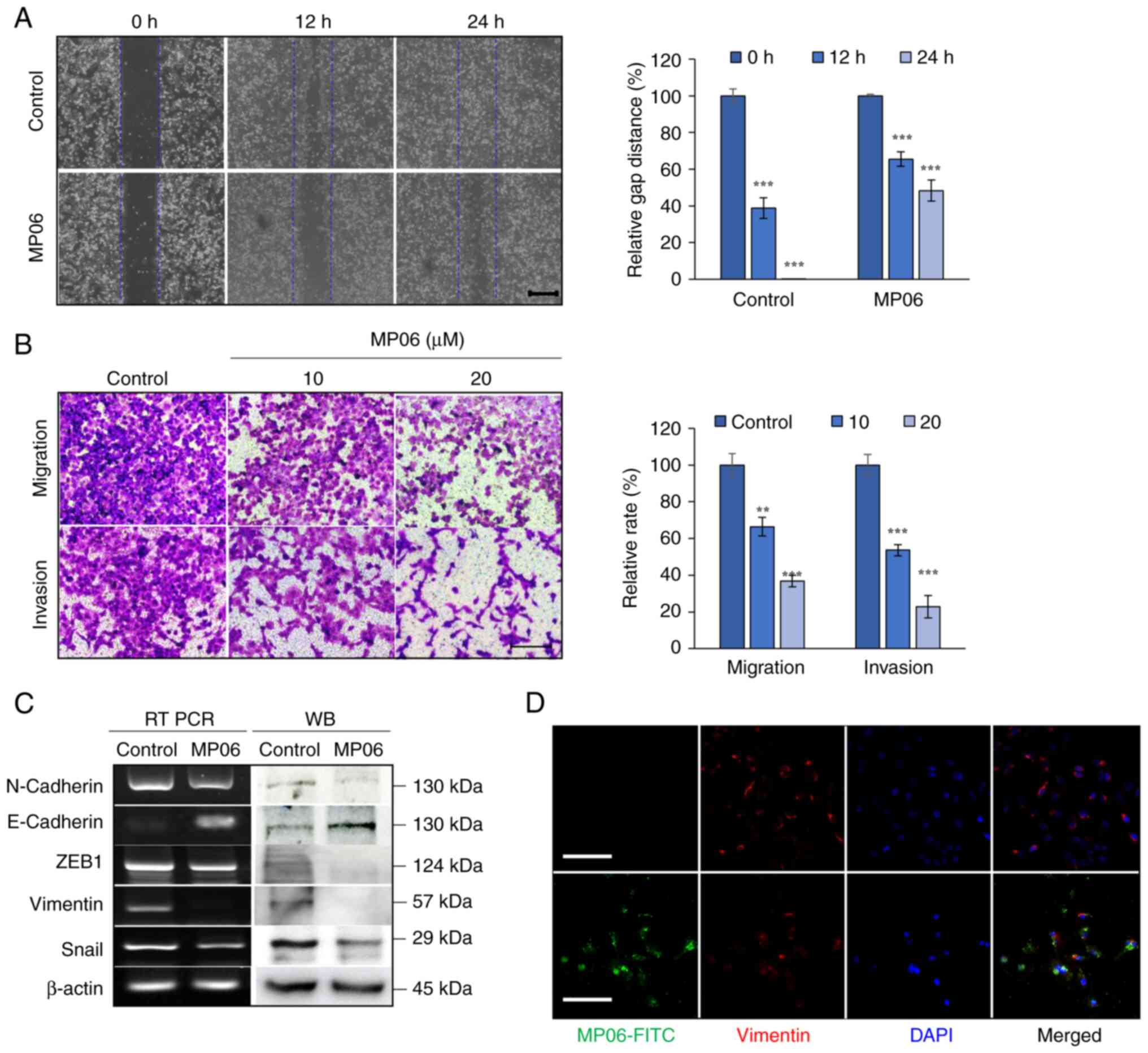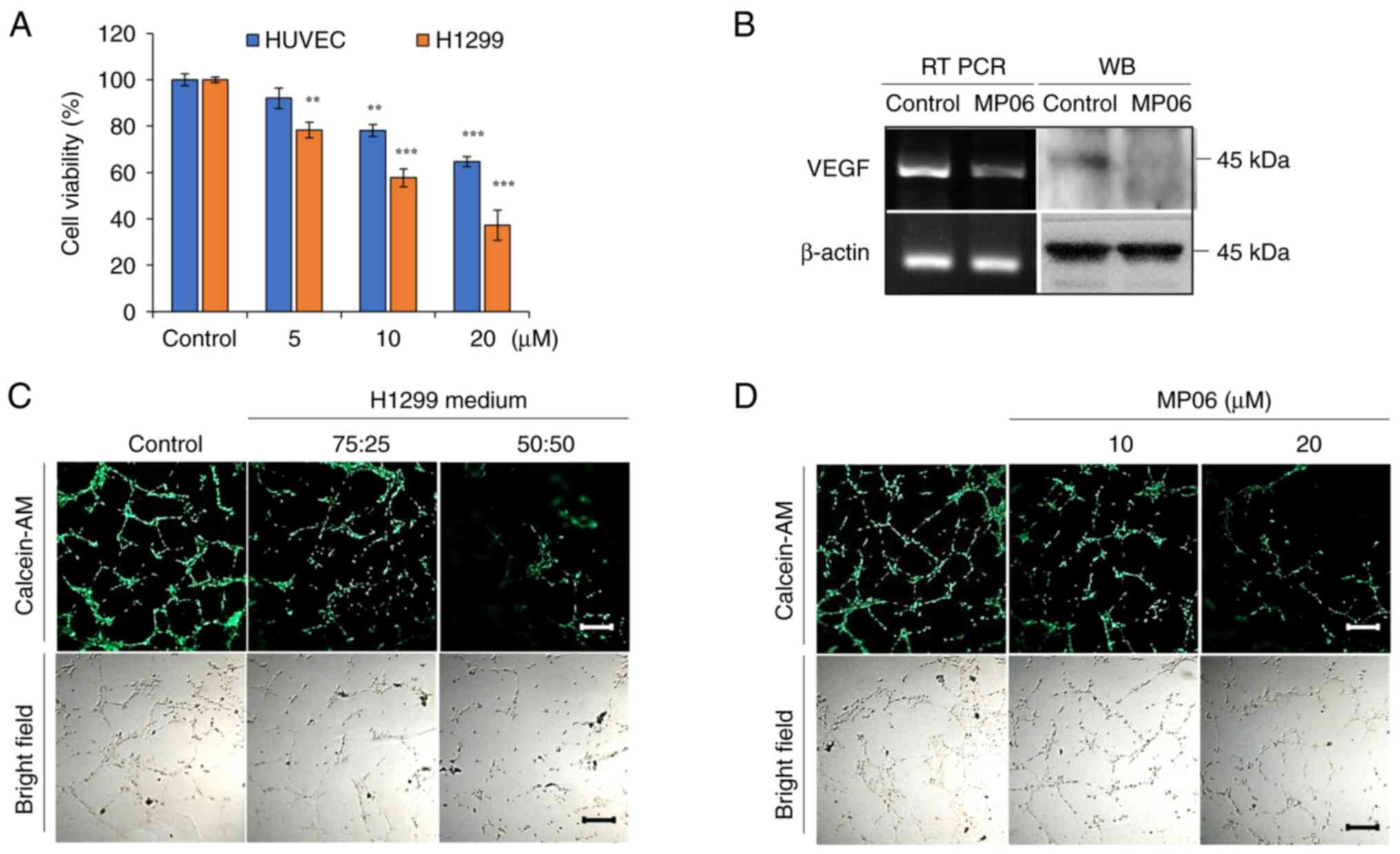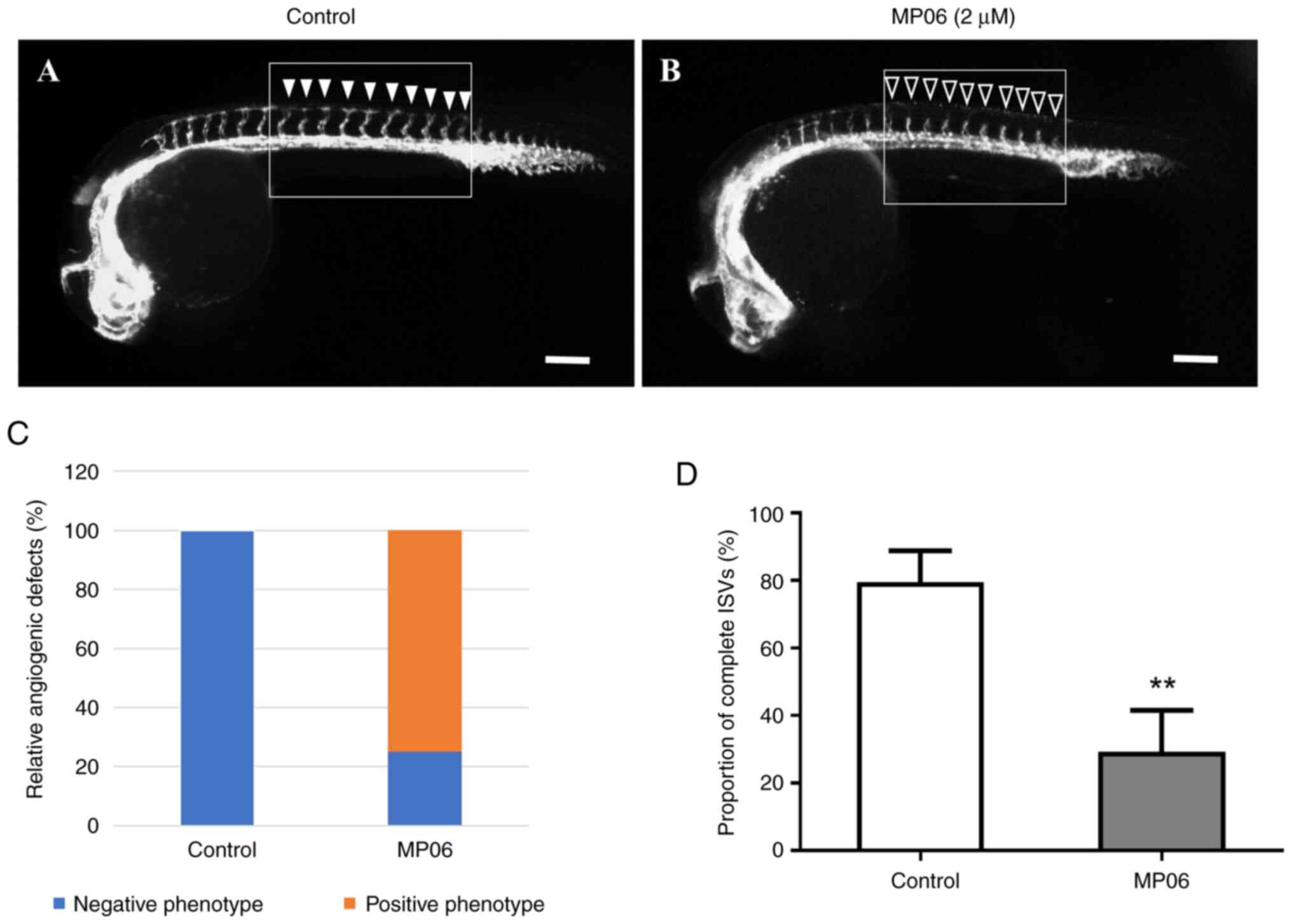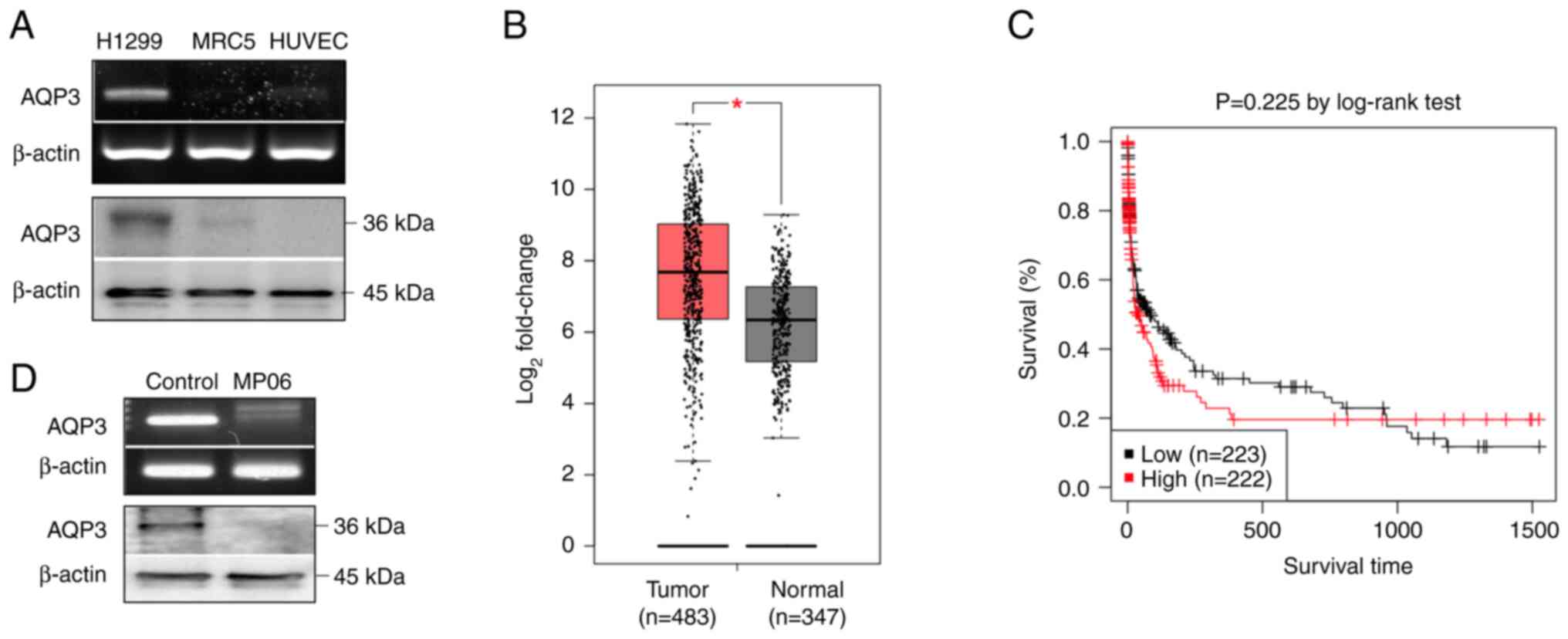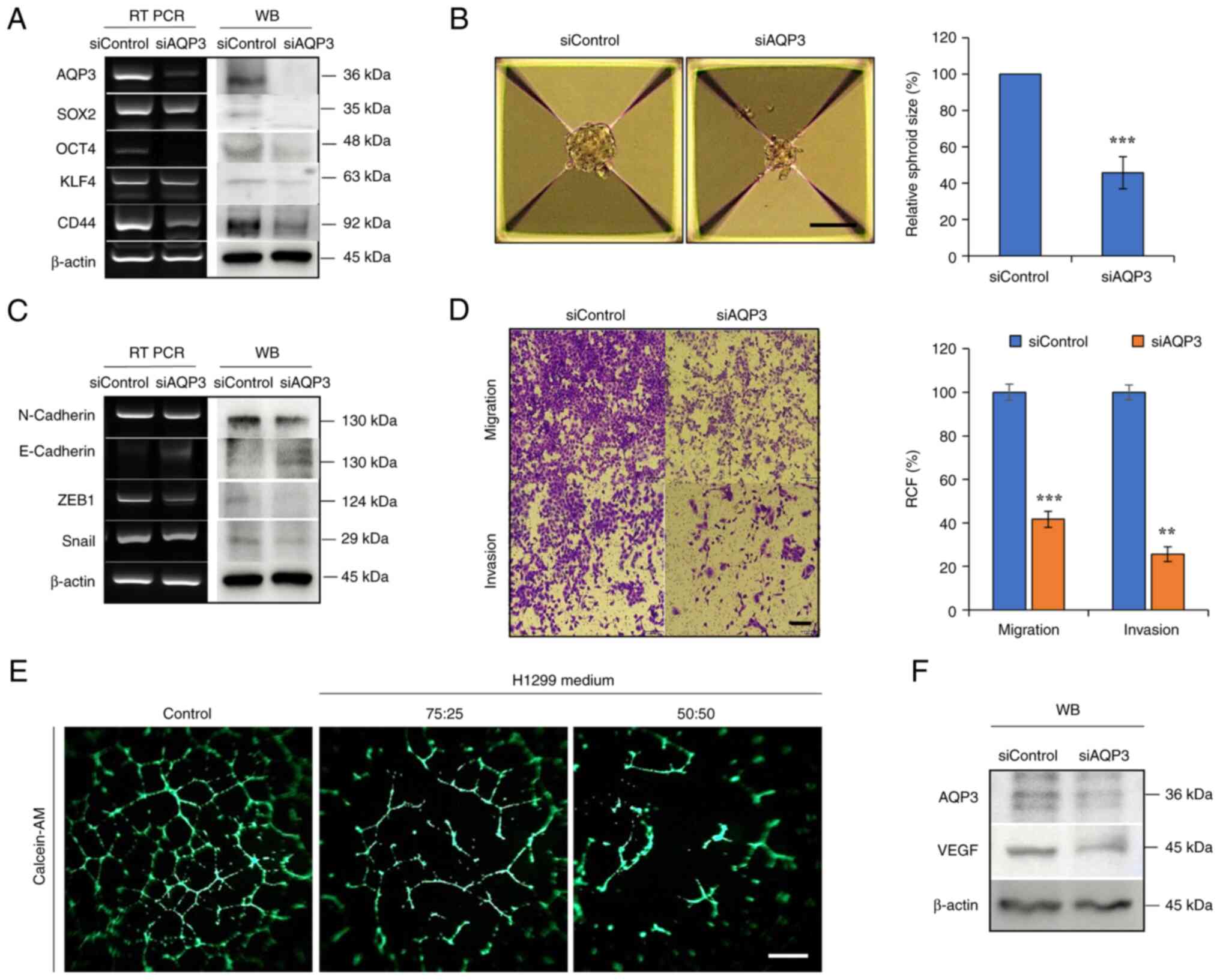|
1
|
Bray F, Laversanne M, Sung H, Ferlay J,
Siegel RL, Soerjomataram I and Jemal A: Global cancer statistics
2022: GLOBOCAN estimates of incidence and mortality worldwide for
36 cancers in 185 countries. CA Cancer J Clin. 74:229–263. 2024.
View Article : Google Scholar : PubMed/NCBI
|
|
2
|
Evans M: Lung cancer: Needs assessment,
treatment and therapies. Br J Nurs. 22(Suppl 17): S15–S22. 2013.
View Article : Google Scholar : PubMed/NCBI
|
|
3
|
Hirsch FR, Scagliotti GV, Mulshine JL,
Kwon R, Curran WJ Jr, Wu YL and Paz-Ares L: Lung cancer: Current
therapies and new targeted treatments. Lancet. 389:299–311. 2017.
View Article : Google Scholar
|
|
4
|
Hirsch FR, Suda K, Wiens J and Bunn PA Jr:
New and emerging targeted treatments in advanced non-small-cell
lung cancer. Lancet. 388:1012–1024. 2016. View Article : Google Scholar : PubMed/NCBI
|
|
5
|
Lu W and Kang Y: Epithelial-mesenchymal
plasticity in cancer progression and metastasis. Dev Cell.
49:361–374. 2019. View Article : Google Scholar : PubMed/NCBI
|
|
6
|
Tsoukalas N, Aravantinou-Fatorou E, Tolia
M, Giaginis C, Galanopoulos M, Kiakou M, Kostakis ID, Dana E,
Vamvakaris I, Korogiannos A, et al: Epithelial-mesenchymal
transition in non-small-cell lung cancer. Anticancer Res.
37:1773–1778. 2017. View Article : Google Scholar : PubMed/NCBI
|
|
7
|
Majeed U, Manochakian R, Zhao Y and Lou Y:
Targeted therapy in advanced non-small cell lung cancer: Current
advances and future trends. J Hematol Oncol. 14:1082021. View Article : Google Scholar : PubMed/NCBI
|
|
8
|
Brock CS and Lee S: Anti-angiogenic
strategies and vascular targeting in the treatment of lung cancer.
Eur Resp J. 19:557–570. 2002. View Article : Google Scholar
|
|
9
|
Tian W, Cao C, Shu L and Wu F:
Anti-angiogenic therapy in the treatment of non-small cell lung
cancer. Onco Targets Ther. 13:12113–12129. 2020. View Article : Google Scholar : PubMed/NCBI
|
|
10
|
Yu Z, Pestell TG, Lisanti MP and Pestell
RG: Cancer stem cells. Int J Biochem Cell Biol. 44:2144–2151. 2012.
View Article : Google Scholar : PubMed/NCBI
|
|
11
|
Prabavathy D, Swarnalatha Y and Ramadoss
N: Lung cancer stem cells-origin, characteristics and therapy. Stem
Cell Investig. 5:62018. View Article : Google Scholar : PubMed/NCBI
|
|
12
|
Leon G, MacDonagh L, Finn SP, Cuffe S and
Barr MP: Cancer stem cells in drug resistant lung cancer: Targeting
cell surface markers and signaling pathways. Pharmacol Ther.
158:71–90. 2016. View Article : Google Scholar
|
|
13
|
Codony-Servat J, Verlicchi A and Rosell R:
Cancer stem cells in small cell lung cancer. Transl Lung Cancer
Res. 5:16–25. 2016.PubMed/NCBI
|
|
14
|
Shibue T and Weinberg RA: EMT, CSCs, and
drug resistance: The mechanistic link and clinical implications.
Nat Rev Clin Oncol. 14:611–629. 2017. View Article : Google Scholar : PubMed/NCBI
|
|
15
|
Krebs AM, Mitschke J, Losada ML,
Schmalhofer O, Boerries M, Busch H, Boettcher M, Mougiakakos D,
Reichardt W, Bronsert P, et al: The EMT-activator Zeb1 is a key
factor for cell plasticity and promotes metastasis in pancreatic
cancer. Nat Cell Biol. 19:518–529. 2017. View Article : Google Scholar : PubMed/NCBI
|
|
16
|
Loret N, Denys H, Tummers P and Berx G:
The role of epithelial-to-mesenchymal plasticity in ovarian cancer
progression and therapy resistance. Cancers (Basel). 11:8382019.
View Article : Google Scholar : PubMed/NCBI
|
|
17
|
Tanabe S, Quader S, Cabral H and Ono R:
Interplay of EMT and CSC in cancer and the potential therapeutic
strategies. Front Pharmacol. 11:9042020. View Article : Google Scholar : PubMed/NCBI
|
|
18
|
Kim H, Kim HT, Jung SH, Han JW, Jo S, Kim
IG, Kim RK, Kahm YJ, Choi TI, Kim CH and Lee JH: A novel anticancer
peptide derived from bryopsis plumosa regulates proliferation and
invasion in non-small cell lung cancer cells. Mar Drugs.
21:6072023. View Article : Google Scholar : PubMed/NCBI
|
|
19
|
Rosca EV, Koskimaki JE, Rivera CG, Pandey
NB, Tamiz AP and Popel AS: Anti-angiogenic peptides for cancer
therapeutics. Curr Pharm Biotechnol. 12:1101–1116. 2011. View Article : Google Scholar : PubMed/NCBI
|
|
20
|
Karagiannis ED and Popel AS: A systematic
methodology for proteome-wide identification of peptides inhibiting
the proliferation and migration of endothelial cells. Proc Natl
Acad Sci USA. 105:13775–13780. 2008. View Article : Google Scholar : PubMed/NCBI
|
|
21
|
Koskimaki JE, Karagiannis ED, Rosca EV,
Vesuna F, Winnard PT Jr, Raman V, Bhujwalla ZM and Popel AS:
Peptides derived from type IV collagen, CXC chemokines, and
thrombospondin-1 domain-containing proteins inhibit
neovascularization and suppress tumor growth in MDA-MB-231 breast
cancer xenografts. Neoplasia. 11:1285–1291. 2009. View Article : Google Scholar : PubMed/NCBI
|
|
22
|
Ishimoto S, Wada K, Usami Y, Tanaka N,
Aikawa T, Okura M, Nakajima A, Kogo M and Kamisaki Y: Differential
expression of aquaporin 5 and aquaporin 3 in squamous cell
carcinoma and adenoid cystic carcinoma. Int J Oncol. 41:67–75.
2012.PubMed/NCBI
|
|
23
|
Agre P: Aquaporin water channels. Biosci
Rep. 24:127–163. 2004. View Article : Google Scholar
|
|
24
|
Delporte C: Aquaporins and gland
secretion. Aquaporins. 969:63–79. 2017. View Article : Google Scholar
|
|
25
|
Papadopoulos MC and Saadoun S: Key roles
of aquaporins in tumor biology. Biochim Biophys Acta.
1848:2576–2583. 2015. View Article : Google Scholar
|
|
26
|
Ismail M, Bokaee S, Morgan R, Davies J,
Harrington KJ and Pandha H: Inhibition of the aquaporin 3 water
channel increases the sensitivity of prostate cancer cells to
cryotherapy. Br J Cancer. 100:1889–1895. 2009. View Article : Google Scholar : PubMed/NCBI
|
|
27
|
Liu YL, Matsuzaki T, Nakazawa T, Murata
SI, Nakamura N, Kondo T, Iwashina M, Mochizuki K, Yamane T, Takata
K and Katoh R: Expression of aquaporin 3 (AQP3) in normal and
neoplastic lung tissues. Hum Pathol. 38:171–178. 2007. View Article : Google Scholar
|
|
28
|
Li B, Jin L, Zhong K and Du D: Correlation
of aquaporin 3 expression with the clinicopathologic
characteristics of non-small cell lung cancer. Zhongguo Fei Ai Za
Zhi. 15:404–408. 2012.In Chinese. PubMed/NCBI
|
|
29
|
Xia H, Ma YF, Yu CH, Li YJ, Tang J, Li JB,
Zhao YN and Liu Y: Aquaporin 3 knockdown suppresses tumour growth
and angiogenesis in experimental non-small cell lung cancer. Exp
Physiol. 99:974–984. 2014. View Article : Google Scholar
|
|
30
|
Jaskiewicz L, Hejne K, Szostak B,
Osowiecka K, Skowronski MT, Lepiarczyk E, Doboszynska A, Majewska
M, Kordowitzki P and Skowronska A: Expression profiles of AQP3 and
AQP4 in lung adenocarcinoma samples generated via Bronchoscopic
biopsies. J Clin Med. 11:59542022. View Article : Google Scholar :
|
|
31
|
Nusslein-Volhard C and Dahm R: Zebrafish:
A Practical Approach. Oxford University Press; New York, NY: 2002,
View Article : Google Scholar
|
|
32
|
Khater I and Nassar A: Potential antiviral
peptides targeting the SARS-CoV-2 spike protein. BMC Pharmacol
Toxicol. 23:912022. View Article : Google Scholar : PubMed/NCBI
|
|
33
|
Hadianamrei R, Tomeh MA, Brown S, Wang J
and Zhao X: Rationally designed short cationic α-helical peptides
with selective anticancer activity. J Colloid Interface Sci.
607:488–501. 2022. View Article : Google Scholar
|
|
34
|
Huang YB, He LY, Jiang HY and Chen YX:
Role of helicity on the anticancer mechanism of action of
cationic-helical peptides. Int J Mol Sci. 13:6849–6862. 2012.
View Article : Google Scholar : PubMed/NCBI
|
|
35
|
Lee S, Wottrich S and Bonavida B:
Crosstalks between Raf-kinase inhibitor protein and cancer stem
cell transcription factors (Oct4, KLF4, Sox2, Nanog). Tumor Biol.
39:10104283176922532017. View Article : Google Scholar
|
|
36
|
van Schaijik B, Davis PF, Wickremesekera
AC, Tan ST and Itinteang T: Subcellular localisation of the stem
cell markers OCT4, SOX2, NANOG, KLF4 and c-MYC in cancer: A review.
J Clin Pathol. 71:88–91. 2018. View Article : Google Scholar
|
|
37
|
Fantozzi A, Gruber DC, Pisarsky L, Heck C,
Kunita A, Yilmaz M, Meyer-Schaller N, Cornille K, Hopfer U,
Bentires-Alj M and Christofori G: VEGF-mediated angiogenesis links
EMT-induced cancer stemness to tumor initiation. Cancer Res.
74:1566–1575. 2014. View Article : Google Scholar : PubMed/NCBI
|
|
38
|
Hilchie A, Hoskin D and Coombs MR:
Anticancer activities of natural and synthetic peptides. Adv Exp
Med Biol. 1117:131–147. 2019. View Article : Google Scholar : PubMed/NCBI
|
|
39
|
Shin MK, Jang BY, Bu KB, Lee SH, Han DH,
Oh JW and Sung JS: De novo design of AC-P19M, a novel anticancer
peptide with apoptotic effects on lung cancer cells and
anti-angiogenic activity. Int J Mol Sci. 23:155942022. View Article : Google Scholar : PubMed/NCBI
|
|
40
|
Chinnadurai RK, Khan N, Meghwanshi GK,
Ponne S, Althobiti M and Kumar R: Current research status of
anti-cancer peptides: Mechanism of action, production, and clinical
applications. Biomed Pharmacother. 164:1149962023. View Article : Google Scholar : PubMed/NCBI
|
|
41
|
Plaks V, Kong N and Werb Z: The cancer
stem cell niche: How essential is the niche in regulating stemness
of tumor cells? Cell Stem Cell. 16:225–238. 2015. View Article : Google Scholar : PubMed/NCBI
|
|
42
|
Iliopoulos D, Hirsch HA and Struhl K:
Metformin decreases the dose of chemotherapy for prolonging tumor
remission in mouse xenografts involving multiple cancer cell types.
Cancer Res. 71:3196–3201. 2011. View Article : Google Scholar : PubMed/NCBI
|
|
43
|
Borovski T, Melo FD, Vermeulen L and
Medema JP: Cancer stem cell niche: The place to be. Cancer Res.
71:634–639. 2011. View Article : Google Scholar : PubMed/NCBI
|
|
44
|
Al-Ostoot FH, Salah S, Khamees HA and
Khanum SA: Tumor angiogenesis: Current challenges and therapeutic
opportunities. Cancer Treat Res Commun. 28:1004222021. View Article : Google Scholar : PubMed/NCBI
|
|
45
|
Marmé D: The impact of anti-angiogenic
agents on cancer therapy. J Cancer Res Clin Oncol. 129:607–620.
2003. View Article : Google Scholar : PubMed/NCBI
|
|
46
|
Elkhider A, Wang B, Ouyang X, Al-Azab M,
Walana W, Sun X, Li H, Tang Y, Wei J and Li X: Aquaporin 5 promotes
tumor migration and angiogenesis in non-small cell lung cancer cell
line H1299. Oncol Lett. 19:1665–1672. 2020.PubMed/NCBI
|
|
47
|
Hou SY, Li YP, Wang JH, Yang SL, Wang Y,
Wang Y and Kuang Y: Aquaporin-3 inhibition reduces the growth of
NSCLC cells induced by hypoxia. Cell Physiol Biochem. 38:129–140.
2016. View Article : Google Scholar : PubMed/NCBI
|
|
48
|
Marlar S, Jensen HH, Login FH and Nejsum
LN: Aquaporin-3 in cancer. Int J Mol Sci. 18:21062017. View Article : Google Scholar : PubMed/NCBI
|
|
49
|
Graziano AC, Avola R, Pannuzzo G and
Cardile V: Aquaporin1 and 3 modification as a result of
chondrogenic differentiation of human mesenchymal stem cell. J Cell
Physiol. 233:2279–2291. 2018. View Article : Google Scholar
|
|
50
|
Zhou Y, Wang Y, Wen J, Zhao H, Dong X,
Zhang Z, Wang S and Shen L: Aquaporin 3 promotes the stem-like
properties of gastric cancer cells via Wnt/GSK-3β/β-catenin
pathway. Oncotarget. 7:16529–16541. 2016. View Article : Google Scholar : PubMed/NCBI
|
|
51
|
Wang Y, Wu G, Fu X, Xu S, Wang T, Zhang Q
and Yang Y: Aquaporin 3 maintains the stemness of CD133+
hepatocellular carcinoma cells by activating STAT3. Cell Death Dis.
10:4652019. View Article : Google Scholar : PubMed/NCBI
|
|
52
|
Xu H, Xu Y, Zhang W, Shen L, Yang L and Xu
Z: Aquaporin-3 positively regulates matrix metalloproteinases via
PI3K/AKT signal pathway in human gastric carcinoma SGC7901 cells. J
Exp Clin Cancer Res. 30:862011. View Article : Google Scholar : PubMed/NCBI
|
|
53
|
Chen J, Wang T, Zhou YC, Gao F, Zhang ZH,
Xu H, Wang SL and Shen LZ: Aquaporin 3 promotes
epithelial-mesenchymal transition in gastric cancer. J Exp Clin
Cancer Res. 33:382014. View Article : Google Scholar : PubMed/NCBI
|



